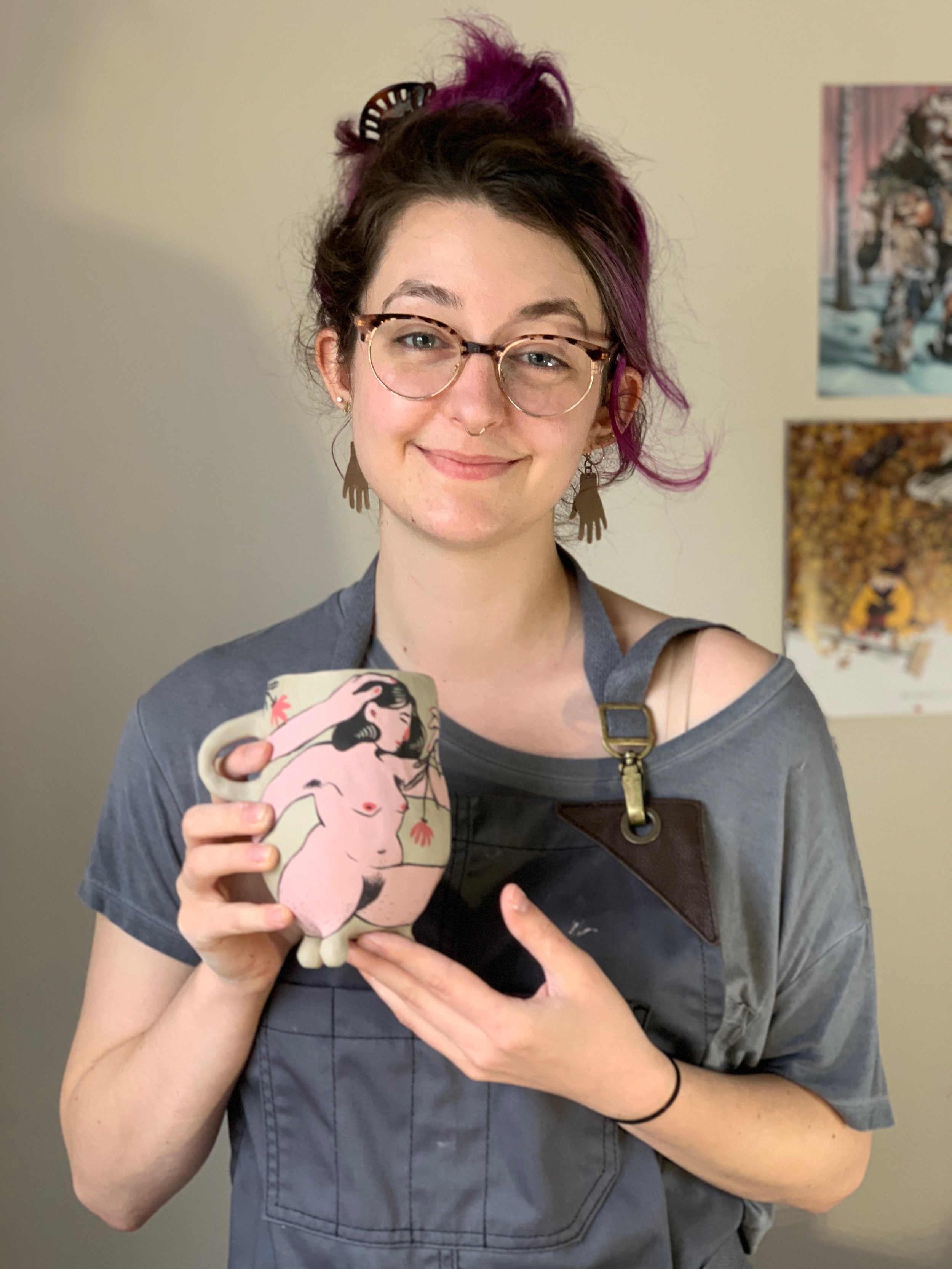About the Artist
Kalee Calhoun (they/she) was born and raised in North Carolina, where she acquired a deep appreciation for the sound of cicadas on summer nights and the word “y’all.” As a teenager, her friends started calling her “Kiwi",” which is how she signs her ceramic work to this day (hence her shop’s name, Made by Kiwi).
She attended Oberlin College (OH) for the first two years of undergrad before deciding to pursue a studio art education at the University of North Carolina at Asheville. They graduated from UNCA in 2018 with a BFA in Ceramics and a Creative Writing minor, after which they worked as a bookseller and manager at Quail Ridge Books in Raleigh, NC. Currently, they are pursuing an MFA in Ceramics and Collegiate Teaching Certification at Rhode Island School of Design, with an expected graduation date of May 2022.
Kalee’s three great loves are art, literature, and nature. Their artwork explores the dichotomy between internal identity & emotion and external appearance & expression, and humans’ relationships to their own bodies within the worlds of nature and stories. When she’s not in the studio making new ceramic work, you can find her reading way too many books, chasing a sunny spot outdoors, and dreaming about all her future pets.
Artist Statement (January 2022)
Bodies accumulate emotions and desires just as houses collect sheets of dust and memories. What remains visible, and what becomes obscured through shame and time? Which shadowed corners do the ghosts haunt, and what happens when we unearth them? Through the accretion of materials and layering of surfaces, my work presents the human figure as a site of cyclical hiding, unearthing, and discovery. Working within the queer and feminist art tradition of reclaiming the feminized body and its fluids, I create ceramic figures, paintings, and written stories to question the boundaries between attraction and disgust, discomfort and fear, naivety and empowerment, touch and intimacy. I incorporate motifs from my Czech and Slavic heritage through the use of patterns and mythological characters to create stories that syncretize the past and present. These narrative bodies tantalize with ambiguity, engendering a pleasurable terror akin to the experience of reading Gothic literature, where dread and delight hold hands like laughing and crying.


